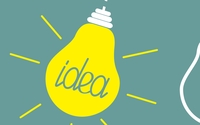 Innovation using Internet of Things technologies
continues and is limited only by someone’s imagination.
Innovation using Internet of Things technologies
continues and is limited only by someone’s imagination.
And what one person dreams up for one purpose may ultimately be adapted for other purposes, most notably marketing messages.
For example, one startup company added smartphone-controlled lights into the shoulders and wrists of a jacket. GPS tracking from the phone automatically triggers the lights telling a bicycle or
motorcycle rider which way to turn, while the lights on the shoulders notify anyone following which way the rider will be going.
Aside from whether anyone will buy such a jacket, the idea of
embedding controlled sensors in clothing is coming in a big way. In the case of the jacket, marketing messages could just as easily be added to the back so that the rider’s back becomes
essentially a moving billboard.
advertisement
advertisement
Messages could be triggered by beacons, which will be pretty much everywhere, making the messages highly targeted and relevant.
This is hardly a
suggestion for anyone to do this, but you get the idea.
Sensors and wearable technologies of all types are being devised and will be launched into the marketplace to see what sticks.
They will be used to unlock doors, control homes and offices, monitor anything from heating to lighting and, most importantly for marketers, to transport messaging.
One of the initial and
primary uses of connected objects is to gather or sense information, which can be relayed as data points to various data collection and analytics systems, all of which are being built out
now.
Just as the imagination of creating uses of connected objects is unlimited, so will be the innovation in IoT advertising and marketing.